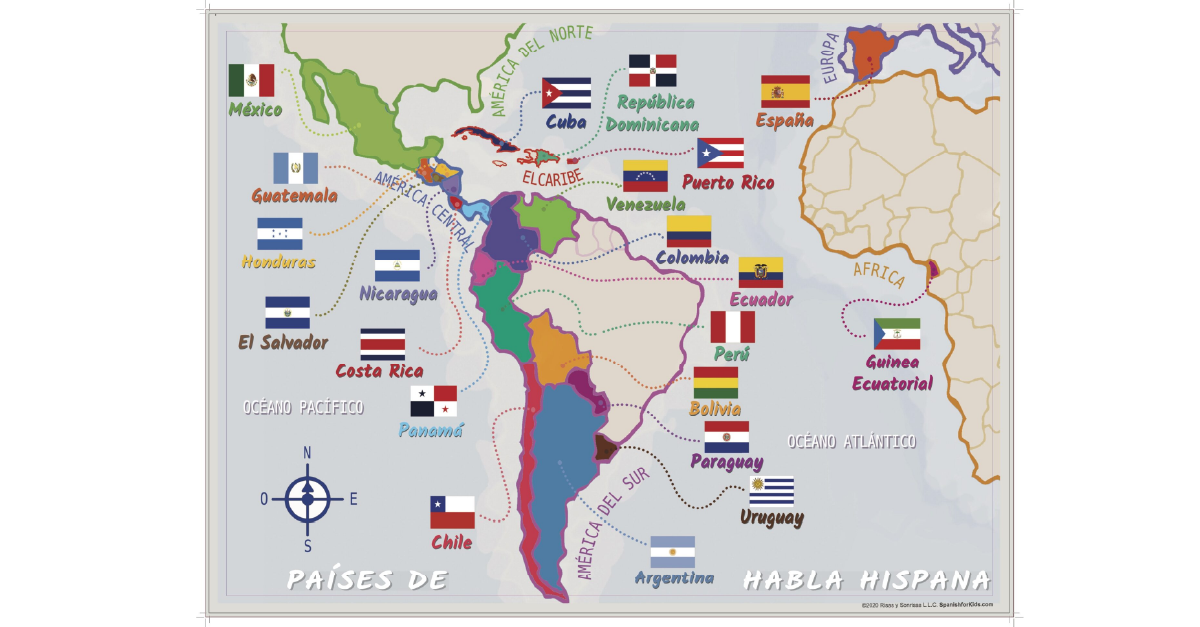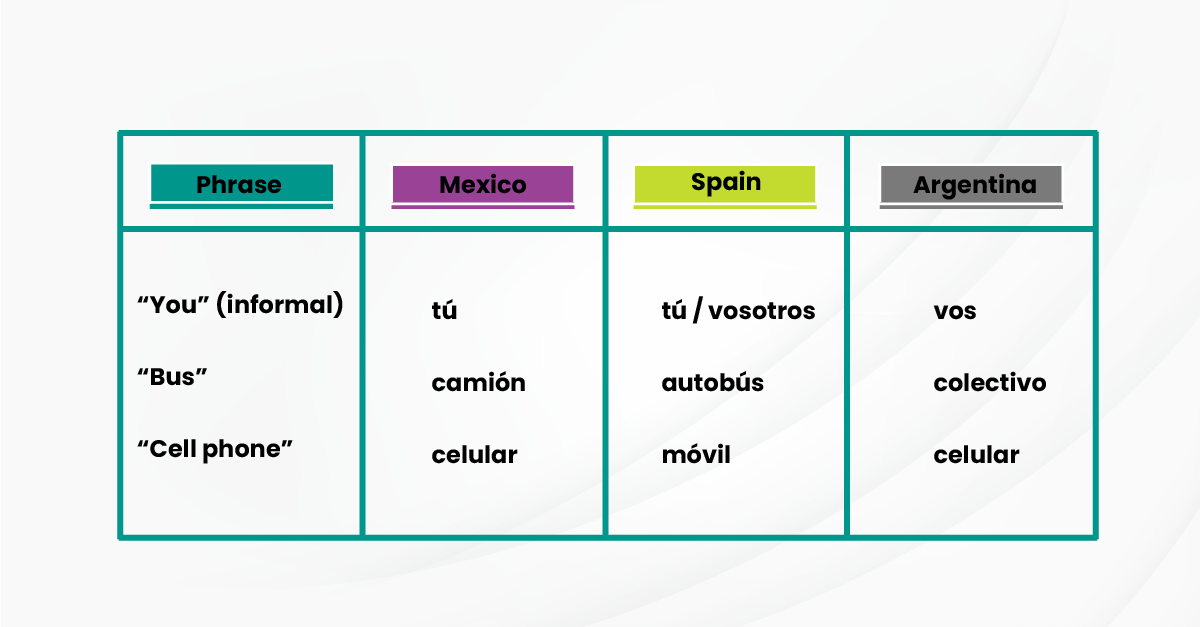Spanish is one of the most influential languages in the world, spoken by more than 572 million speakers worldwide and recognized as the official language in 21 countries across multiple continents. That makes it the second most spoken native language globally, after Mandarin.
For global brands, it is a gateway to business opportunities. Expanding into countries speaking Spanish opens doors to fast-growing economies in Latin America, established markets in Spain, and thriving Hispanic demographics worldwide, including the United States.
Yet, Spanish is far from uniform. Each region has its dialects, vocabulary, cultural nuances, and customer expectations. A campaign that resonates in Mexico may fall flat in Argentina, while phrasing that feels natural in Spain may sound overly formal elsewhere. That’s why choosing the right variant of Spanish is essential for building trust, ensuring authenticity, and driving market success.
This blog explores the significance of Spanish as a global language and highlights the importance of understanding the regional variations across countries speaking Spanish to ensure successful business localization, build trust, and create authentic connections with diverse audiences.
Where Is Spanish Spoken? A Look at Official Spanish-Language Nations
Spanish has official status across three continents and continues to shape the identity of more than 21 countries. Here’s the regional breakdown:
| Region | Countries Speaking Spanish |
| South America | Manual copy-paste from files |
| Central America | Costa Rica, El Salvador, Guatemala, Honduras, Nicaragua, Panama |
| Caribbean Hispanophone States | Cuba, Dominican Republic, Puerto Rico (U.S. territory, Spanish has co-official status) |
Beyond these countries, large Hispanic demographics thrive in nations where Spanish is not the official language, most notably the United States, creating one of the largest Spanish-speaking populations worldwide.

Key Regional Clusters and Dialectical Differences
While unified by a shared foundation, countries speaking Spanish differ significantly in pronunciation, vocabulary, and cultural nuance.
- Latin American Spanish: Predominant across Central and South America, it typically avoids the “vosotros” form and embraces simplified verb structures.
- Castilian Spanish: The dialect of Spain, recognized by its distinctive “c” and “z” pronunciation as “th,” alongside unique vocabulary such as “ordenador” for “computer.”
- Caribbean Spanish: Spoken in Cuba, Puerto Rico, and the Dominican Republic, it’s marked by fast speech, dropped consonants, and rich slang.
We often help brands localize into both Castilian Spanish and Latin American Spanish through our tailored Professional Translation Services.
Notable Dialects and Localization Challenges
Some dialects are so distinct that they require tailored localization strategies:
- Rioplatense Spanish: Common in Argentina and Uruguay, influenced by Italian intonation and the use of “vos” instead of “tú.”
- Spain-specific adaptation: Effective campaigns in Spain require adjusting to vosotros forms, region-specific vocabulary, and Iberian cultural references.
- Neutral Spanish translation: Sometimes used for pan-regional campaigns, but often too generic to achieve authentic local engagement.

This table shows why brands cannot afford a one-size-fits-all approach. A simple word choice can make the difference between clear communication and confusing messaging.
The Role of Spanish in Non-Official Contexts
Spanish reaches far beyond the countries where it is officially recognized:
- United States: With approximately 43 million speakers, the U.S. is home to the world’s second-largest Spanish-speaking population, shaping everything from marketing to politics.
- Canada: Major cities such as Toronto and Montreal host thriving Hispanic communities.
- Philippines: While Spanish is no longer official, it continues to influence Filipino culture, history, and loanwords.
- Europe & Asia: From Germany to Japan, Hispanic diaspora communities sustain a strong demand for Spanish-language content and services.
For brands, this means localization opportunities go beyond national borders, extending into multicultural and multilingual markets.
Cultural & Educational Influence of Spanish Worldwide
Spanish is not only spoken but also actively promoted through education and cultural exchange:
- Bilingual education programs: Many U.S. and EU schools include Spanish as a second language.
- Language immersion schools: Globally popular, particularly in Asia and Europe, driving new generations of Spanish speakers.
- Hispanic cultural exports: From Latin pop, salsa, and reggaetón to Spanish-language films and TV dramas, cultural content builds familiarity across borders.
- Global media investment: Streaming giants like Netflix and Disney+ heavily localize into Spanish, subtitling, dubbing, and producing original content.
For businesses, these cultural channels represent marketing opportunities to connect with audiences through language-driven engagement.
Strategic Localization for LATAM and Spain: One Size Doesn’t Fit All
Expanding into Latin America versus Spain requires distinct localization strategies:
- Tone mismatch: Iberian grammar in Mexico may sound overly formal.
- Terminology differences: “Ordenador” in Spain vs. “computadora” in Latin America can confuse users.
- Cultural nuance: Humor, idioms, and references must be carefully localized for relevance.
A company’s product may remain the same, but the way it’s described, marketed, and received in Madrid versus Mexico City makes all the difference. To succeed, businesses must develop Spain-specific campaigns while creating LATAM-focused adaptations.
Speak to Every Market in the Right Spanish
Spanish is a powerful yet diverse language. From Rioplatense in Argentina to Castilian in Spain, from Caribbean Spanish to the U.S. Hispanic market, every audience has unique expectations.
A single version of Spanish is rarely enough. Brands that invest in tailored localization:
- Build stronger emotional connections
- Establish credibility and trust.
- Unlock growth across multiple regions.
Ready to reach countries speaking Spanish with precision? Explore our Spanish Translation Services and connect with every audience the right way.





